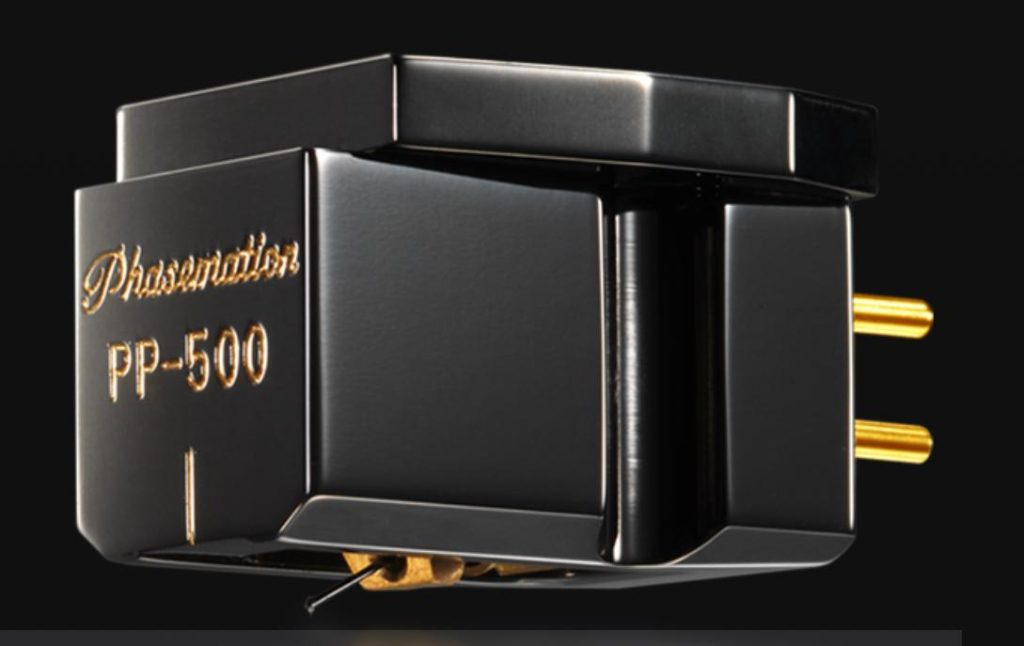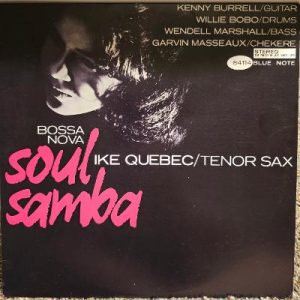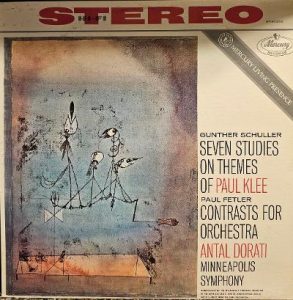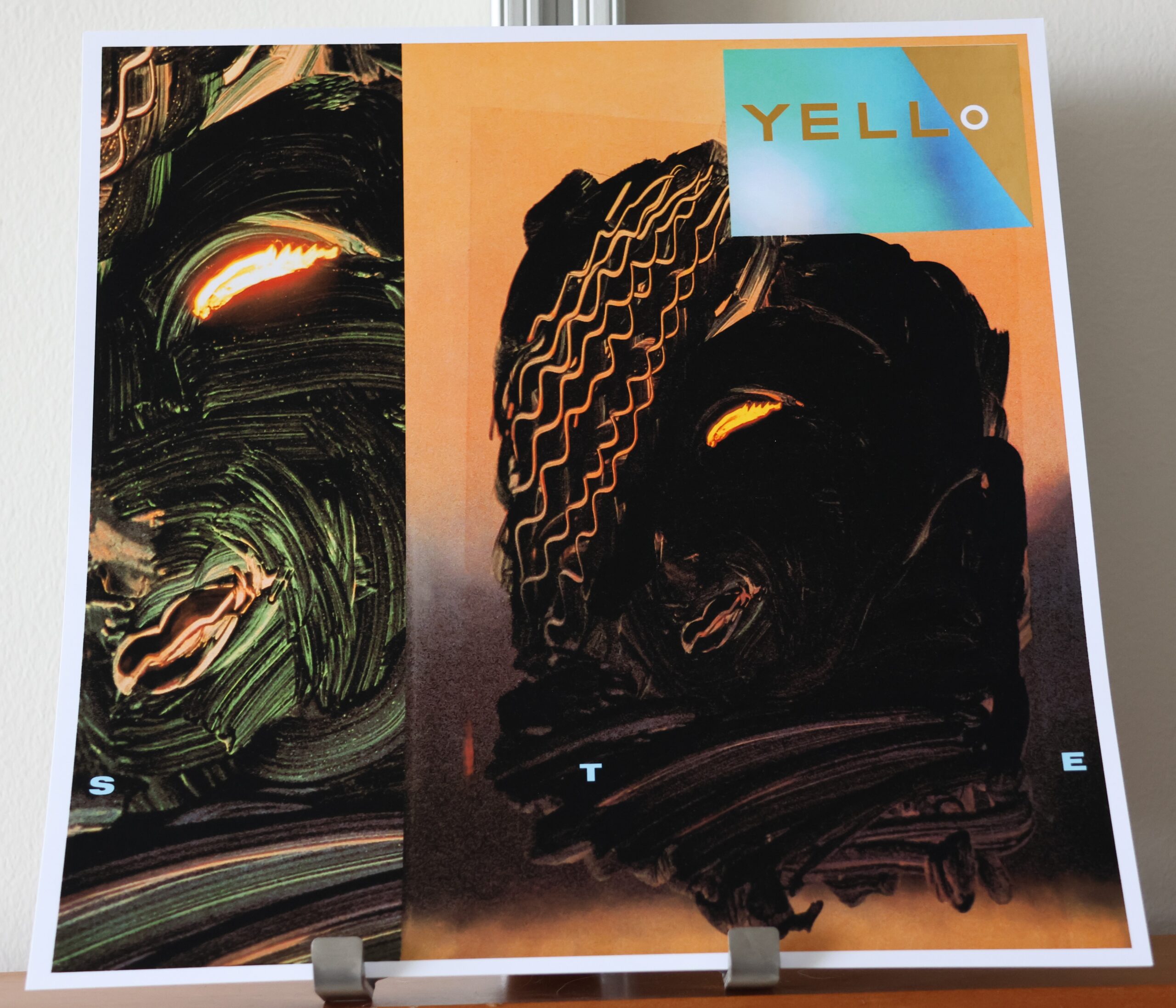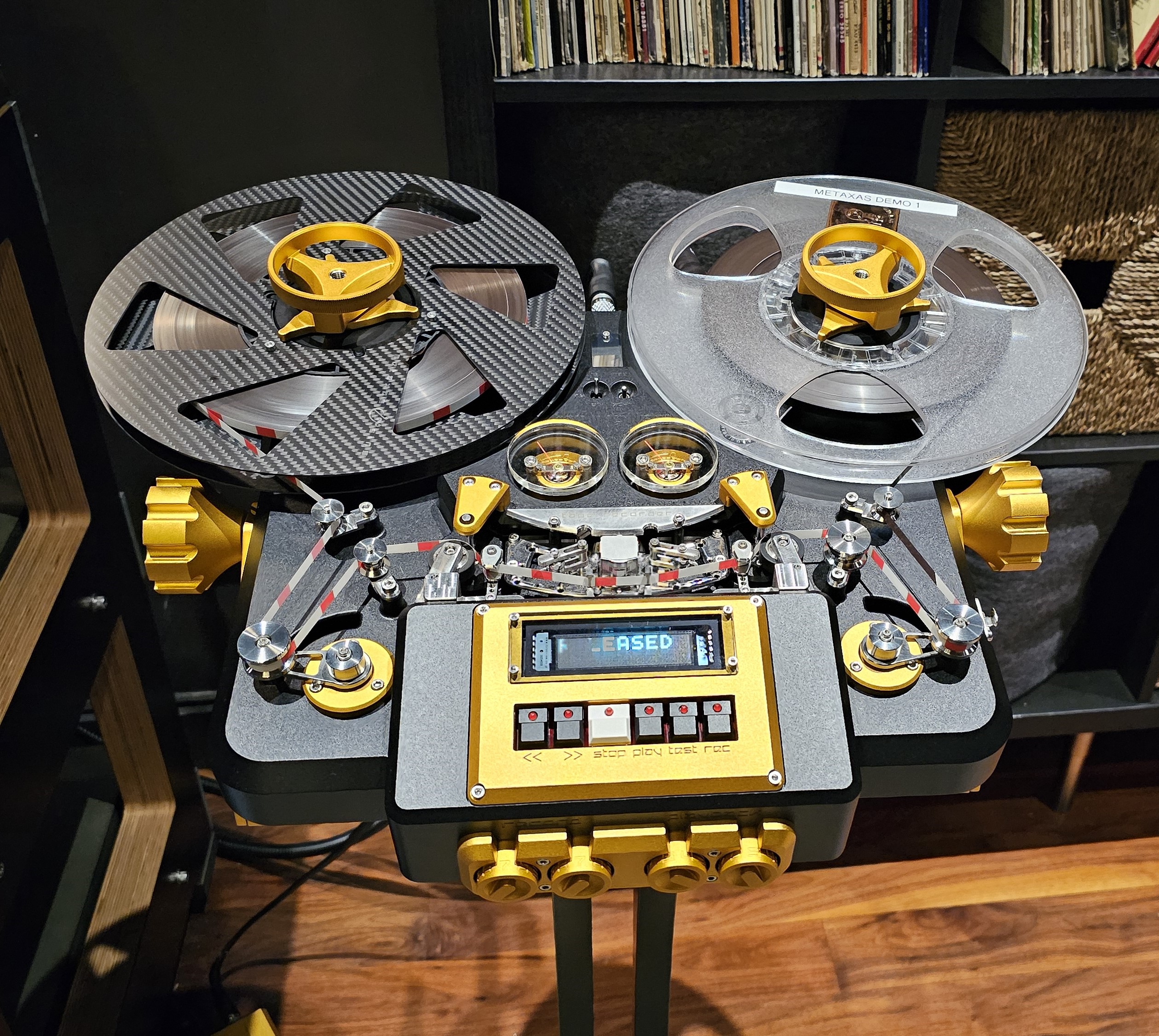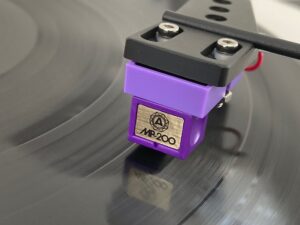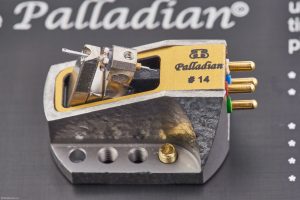"The whole is greater than the sum of the parts" is the perfect description of the sound of the Phasemation PP-500 low output moving coil cartridge. In short? The Phasemation PP-500 cartridge is an extremely musical sounding, low output moving coil cartridge whose overall performance transcends its readily identifiable sonic signature. Is the sound of the Phasemation PP-500 cartridge a result of the designer's careful balancing act? Or is it that the cartridge's strengths play to my biases? It turns out, it's a little bit of both at play here.
Phasemation (known as Phase Tech until 2015) is no johnny come lately to the cartridge and high-end audio scene. The present-day company's name was created according to their website by, "combining phase and information." This Japanese-based company first two products were the Phase Tech P-1 moving coil cartridge and T-1 MC step-up transformer. Since then, the company was involved in the design and building of tube preamplifiers and phono sections, headphone amplifiers, digital products and a variety of accessories. The latest addition to Phasemation's product line includes a pair of monoblock, 300B based, single-ended and parallel single-ended triode power amplifiers. Phasemation's current cartridge line consists of five stereo (and one mono) cartridges with the PP-500 moving coil cartridge residing smack in the middle between the more expensive $7990 PP-2000 and lower priced $2990 PP-300 models.
Mounting the Phasemation PP-500 cartridge in the VPI 12-inch gimballed arm went smoothly (thanks to Mike Trei since my eyes currently aren't up to setting up cartridges) and the transducer spent a good 100 hours grooving before beginning the final adjustments and embarking on the review process. The cartridge was tracked at 1.7 grams and there was never any evidence of strain even when tracking the most demanding musical passages. The cartridge was connected to either the Goldmund Mimesis PH3.8 NextGen or the Doshi Audio EVO phono stages (the Doshi also allows for finer, remote-controlled cartridge loading in increments of 10 ohms under 200 ohms). Some might consider this pairing as overkill nor what the cartridge might be normally matched up with in the real world; on the flip side, these phonostages' exceedingly low coloration, linearity, high resolution and vanishingly low quietness unlocked all of cartridge's potential. There's quite a bit of upside, too, for a cartridge in this price range.
The analog front-end underwent one additional change during the review process. A 1.5-meter run of Audience's FrontRow phono cable was inserted between the special edition, "kitty proofed" version of the VPI 12-inch gimballed arm and the two phonostages. The addition of the Audience phono cable brought out and nicely complimented the cartridge's soundstaging, midrange and spatial recreation qualities.
But permit me to digress for a moment before getting to the meat of the review. A special shout out goes to our beautiful Chocolate Torbie, mitted Ragdoll and budding audiophile Cleo for customizing my VPI 12-inch arm. Soon after entering our life during the pandemic (along with her Sealpoint, Torbie, mitted litter mate Emm), Cleo managed to chew through the wire loop connecting the VPI tonearm to the junction box as well as the wire connecting the cartridge to tonearm. Matt and Harry Weisfeld were, as a result, kind enough to modify their arm to reduce the amount of exposed wire. The tonearm wire in the kitty proofed version now exits the bottom of the arm pillar and is directly connected to the junction box on the back of the arm. The result? The VPI 12-inch gimballed tonearm is now hard-wired from the cartridge pins to the RCA jacks on the back of the arm. Thus, one connection in the signal path was eliminated and that's a good thing!
A Careful Balancing Act
The Phasemation PP-500 strikes me as a cartridge that will appeal to a wide cross-section of readers. Specifically, here, I am thinking of Koetsu cartridge lovers. This transducer really hits it out of the park in that ever so critical midrange area and is capable of painting complex tonal palettes. But the Phasemation isn't a one trick pony either. The cartridge doesn't lack for dynamics, extension at the frequency extremes or make everything sound pretty. No, the Phasemation PP-500 won't be mistaken for a thoroughbred racehorse in its price range say like the Mutech Hayabusa or the decidedly more expensive Lyra Atlas SL Lambda or van den Hul Colibri Master Signature cartridges. But it's hardly ponderous or boring sounding either.
Moonlight Serenade (Jeton 100 3315), arguably one of the finest direct-to-disc albums ever produced, is a good jumping off point for the Phasemation PP-500 review. This album features the talents of jazz legends Ray Brown on bass and Laurindo Almeida on guitar; these two artists are certainly no strangers to each other dating back to (at least) their days with the LA 4 jazz group. Cue up "Round Midnight" and the first quality to emerge is the Phasemation's ability to recreate a realistically sized, three-dimensional and visceral rendition of each instrument's radiating, resonating body. Stunningly painted in space.
What struck me next about the Phasemation PP-500 was the cartridge's transparency and quietness. The type of quietness one finds with Lyra and van den Hul cartridges and I've always attributed to the stylus footprint. More to the point. This degree of transparency and quietness aren't necessarily associated with cartridges in this price range. (So impressed, in fact, that it received a star in my listening notes.) Then I chanced to glance over to my equipment rack and suddenly remembered that the Phasemation was hooked up to the ultra-quiet Goldmund PH3.8 Nextgen phonostage. In fact, the Goldmund PH3.8 Nextgen is one of the quietest phonostages that have run across in quite some time. With the Goldmund, it's become apparent that the lower the noise floor, the more information that comes through. Or is it perhaps it's the latter that less information is masked. Or a little bit of both?
The Phasemation also does an admirable job of capturing the decay of Almeida's guitar as well as that sometimes elusive feeling of airiness surrounding the instrument. The cartridge loses relative to the finest cartridges, however, just a smidge of the air around the instruments, lightness and dexterity and finesse of the instrument. That slight loss of that envelope of air around the instrument favors the carving out of the instrument in the soundstage. Additionally, there is a slight emphasis on the leading relative to the trailing edge of the musical waveform resulting in a little fuller sound. Brown's bass is well reproduced, and the cartridge never loses control of the instrument. In fact, Brown's bass might have even a greater sense of being in the room than Almeida's guitar. Brown's bowing really stands out, but the cartridge loses just a touch of the feeling of the weight and friction of the bow drawing across the strings. All in all, a very solid performance on this simple, yet at the same time challenging recording.
Dean Martin's Dream With Dean (Analogue Production AAP-076-45) appears in many of my reviews and for good reason. This album is positively dreamy sounding when one's audio system is hitting on all cylinders! The Phasemation really brings those dreams to life on "Everybody Loves Somebody" in the form of recreating the feeling of Dean Martin performing in the room topped off with its vaunted three-dimensionality. Couple that with Dean being solidly placed between the two speakers and suddenly it's a club concert-like feeling in your room. Yet in the end, what really stands out about the cartridge's performance is its level resolution. particularly when it comes to vocal articulation and intelligibility. The melody, the phrasing, the breathing and just how the backup musicians play and fill in the spaces when Martin takes a breath is oh-so striking. Where the Phasemation falls a little short—in this case the celeste—is recreating that sense of airiness surrounding instruments.
The cartridge's ability to recreate a huge soundstage is also there on that under the radar Classic Records' reissue of tenor saxophonist Ike Quebec's Soul Samba (Blue Note BST 84114/Classic Records). Once again, it's as if each member of Quebec's quintet is in the room with you. Intimatacy. Palpabilty. Presence. Staging. Add into that mix the cartridge's clarity and transparency. How Burrell slides into the first notes at the opening of "Lloro Tu Despedida." That feeling of the musicians being locked in together. All there in spades and contributing mightily to that "believability" factor. Those elusive and cherished moments when one can temporarily suspend disbelief. Here on Soul Samba it's more of the Phasemation's slightly subtractive side that comes through. The cartridge loses a little of the airiness surrounding the saxophone, a slight loss when called for of the guitar's staccato feeling and the ultimate in the effortless feel and quickness of today's finest cartridges.
How does the Phasemation fare with a little larger scale recording? For that we turn to something with a little denser presentation such the pulsing, throbbing beat of Yello's 45-rpm maxi-single "Oh Yeah" (Mercury 888 908-1) to answer that question. (Coincidentally, also Yello's biggest hit and used in the 1986 movie Ferris Bueller's Day Off). The Phasemation doesn't disappoint either with its positively kaleidoscopic rendition of this electronic music and engineered vocals. "Oh Yeah" has an expansive feel and a good sense of spaciousness. The cartridge just fills the room from wall-to-wall and front-to-back sound. No, the Phasemation isn't going to equal the best in breed here: the cartridge loses just a little of the pulse/power/beat of the music and exhibits a slight reserved quality. Then again, listen to fullness and authority of those engineered vocals and it's game over. I've melted into the listening chair!
Finally, one go to album when it comes to large scale classical music is Antal Dorati and the Minneapolis Symphony performing Paul Fetler's Contrasts for Orchestra (Mercury SR90282). (Interestingly, Dorati and the Minneapolis also debuted this piece in 1958.) This Mercury recording possesses a world of dynamics and demonstrates why back in the ‘60s record labels begged George Piros to master their recordings because of his ability to make demanding, dynamic cuts. The Phasemation PP-500 nicely captures the dynamic range of the composition and doesn't change character when dynamically pushed. Take the second movement first. Instruments just pop up out of nowhere. Flutes, reeds and other instruments really show off the cartridge's midrange tone as well as the cartridge neatly sidestepping any temptation to stray into brightness territory. The Phasemation PP-500 does all of this without the penalties of the Koetsu wood bodied cartridges (the stone bodies are another story). The fourth movement begins with bells, horns, percussion and drums and the cartridge does an admirable job of capturing the soaring trumpets and speed explosive speed of the tympani. Add into that the delineation of the piano and the urgency of double basses.
The Little Cartridge That Could
"The sound that we strive after is reproduction of live music stage in front of the listeners as if musicians are playing there, and reproduction of player's pathos and emotion. We believe that realization of such musical reproduction is the goal for the sound created by stereo equipment."
There's no doubt in my mind that the Phasemation PP-500 embodies and achieves the company's mission statement with flying colors. There's also no question that the Phasemation cartridges designer/team carefully weighed all the different design variables and came up with just the right blend to produce a cartridge with no major weaknesses and a good tonal balance (isn't that true about all good high-end audio products?). There's also no doubt that the Phasemation PP-500 delivers the goods for those, myself included, who value soundstaging and dimensionality in the recreation of a recording.
Sure, you could wish for slightly more transient attack, explosiveness, delineation in the bass or delicacy. But, at least for me, these qualities never come into conflict with sheer musical enjoyment. Furthermore, the PP-500 is one cartridge that could easy find its way into systems way above its pay grade.
Highest recommendation and hopefully one day Phasemation's newly released PP-5000 diamond cantilever might one day make its way into the reference system!
Technical Highlights
The Phasemation PP-500 cartridge debuted in 2016 and borrows much of its technology from the more expensive PP-2000. For instance, the PP-500's magnetic generator is derived from their then flagship PP-2000 model according to Phasemation. Their design goal was, "to provide an excellent magnetic field having high efficiency and uniformity." The cartridge's generator mechanism is fashioned from Permendur, a cobalt-iron, soft ferromagnetic material with equal parts of cobalt and iron. Permendur is noted for its high magnetic saturation level (Wiki citation). The advantage of high saturation in a magnetic core is that it can function at higher magnetic field strengths, so the core can be smaller and lighter for a given magnetic flux and power level." The vibration damping system, on the other hand, is taken from the PP-300 and improved upon using a duralumin base tuned for the PP-500. The cartridge body is coated with DLC (diamond Like carbon), something Phasemation has done since its first cartridges and specifically chosen for its clarity and vibration damping qualities.
Specifications
- Internal impedance: 4 ohm
- Recommended VTF: 1.7 to 2.0 g
- Output voltage: 0.3 mV (5 cm/s)
- Compliance: 8 um/mN
- Frequency response:10 Hz to 30kHz
- Channel separation: >30 dB
- Stylus: Diamond line contact, 0.03 x 0.003 mm curvature
- Cantilever: pure boron
- Magnet: Samarium cobalt
- Magnetic Circuit composition material: Permendur
- Weight: 11.3 g
PP-500 cartridge
Retail: $4400
Phasemation




